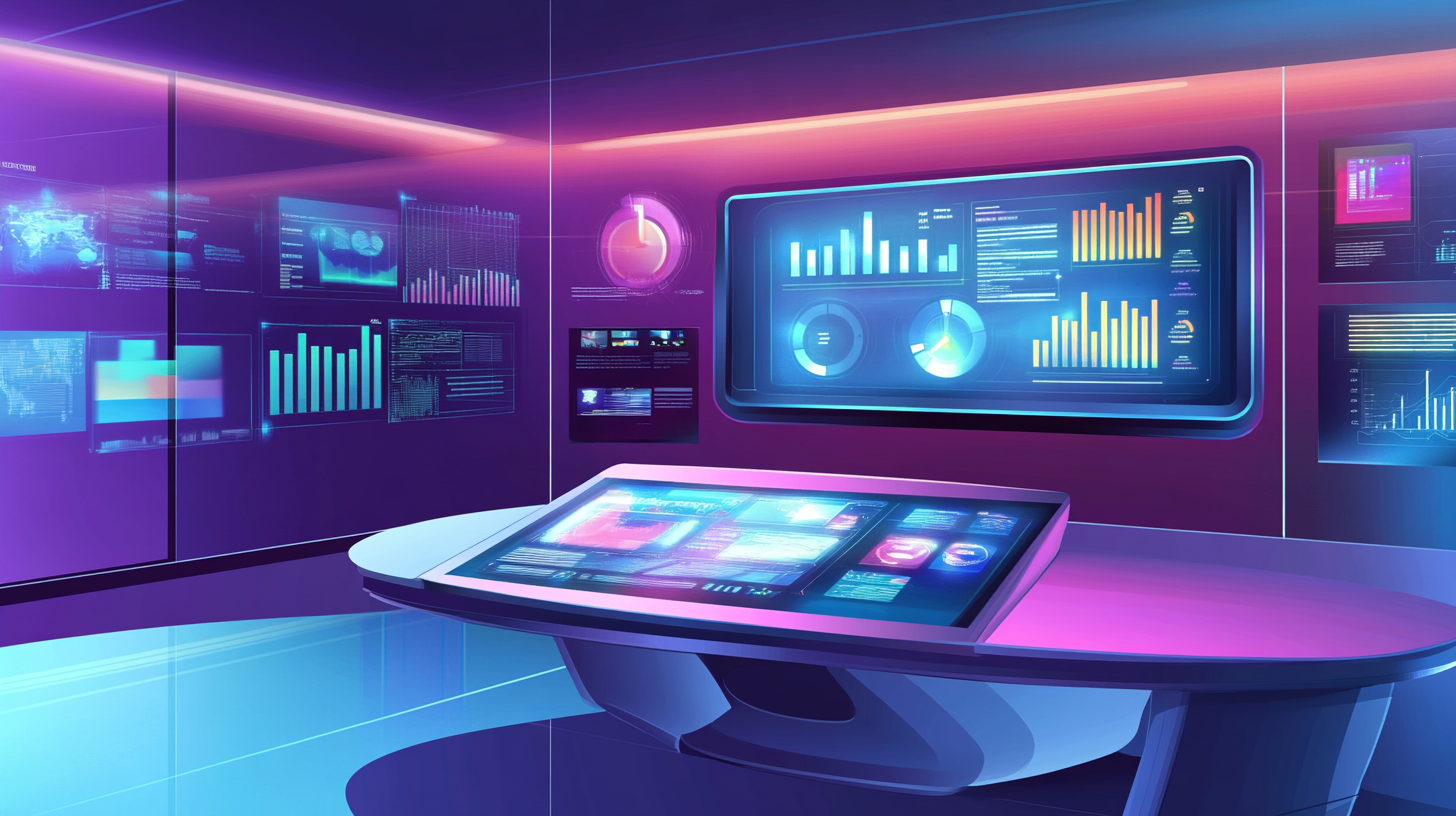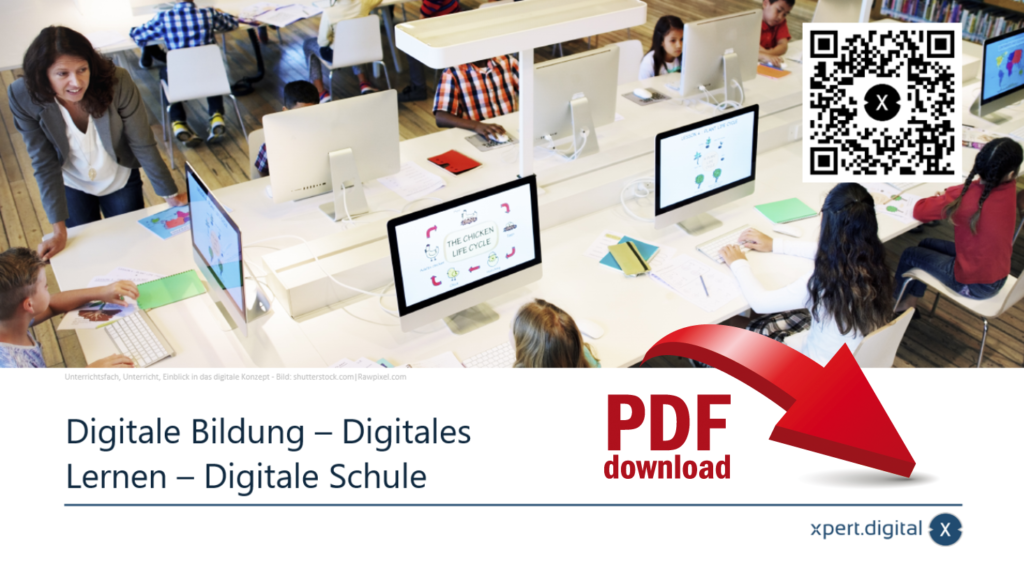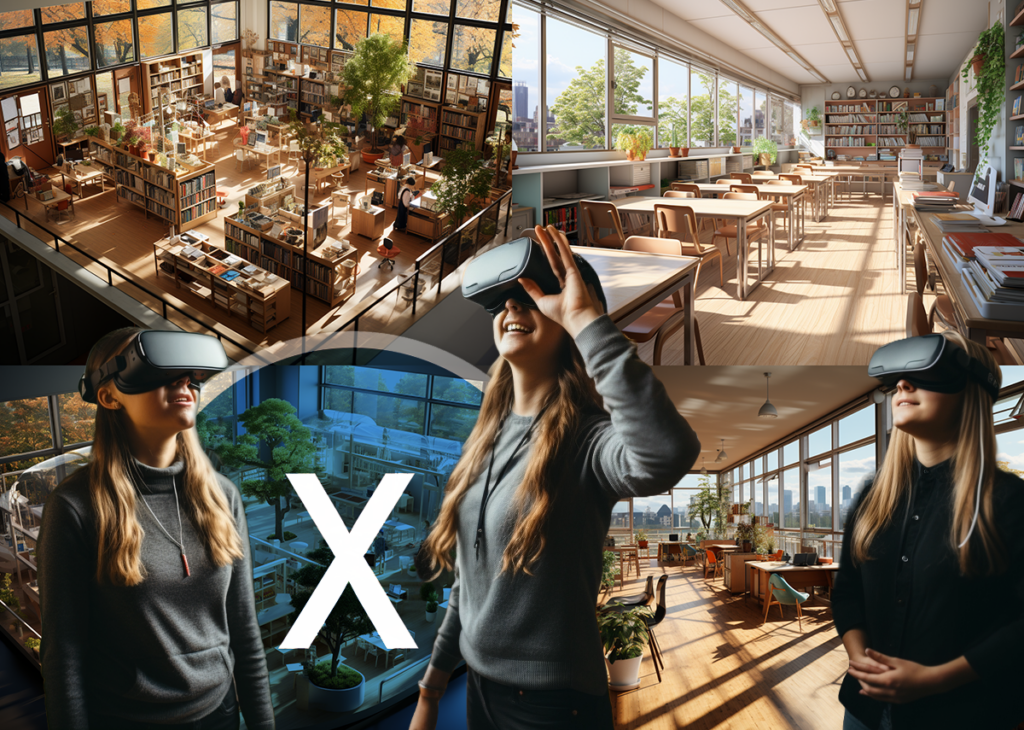Published on: November 14, 2024 / update from: November 14, 2024 - Author: Konrad Wolfenstein

Interactive screens, so-called touchscreens – market development and possible uses – Image: Xpert.Digital
🏆 Future of interactive screens: market and areas of application
🌐 Touchscreen trends: How markets and industries benefit
Interactive screens, especially touchscreen technologies, have experienced significant development in recent years and have become an integral part of many areas of life. From smartphones and tablets to interactive whiteboards and retail kiosks: the versatility and intuitive usability of touchscreens offer numerous possible uses.
Here is an overview of the market development and the main application areas of touchscreen technologies:
🌍 Market development
The global market size for interactive displays, including touchscreens, continues to grow. In 2022, the market was valued at $41.95 billion and is expected to grow to $86.44 billion by 2030, growing at a compound annual growth rate (CAGR) of 9.7%. Strong growth is particularly evident in North America and the Asia-Pacific region. Asia Pacific is considered the largest market due to high demand for smartphones and consumer electronics.
Another important aspect is the touchscreen controller market, which has an annual growth rate of around 14.9%. These controllers are crucial to the functionality of touchscreens in various devices such as smartphones, tablets and automotive infotainment systems. Technological advancements in capacitive and resistive touchscreens as well as new technologies such as gesture recognition and augmented reality continue to drive market growth.
🚀 Possible uses
Interactive screens are used in many areas. Here are some of the main uses:
📚 Education
Interactive whiteboards and displays are increasingly being used in classrooms to make lessons more interactive. Teachers can present multimedia content and actively involve students in the learning process. This technology promotes collaboration and supports dynamic learning methods.
🛍️ Retail
Interactive kiosks are used in retail to improve customer experience. Customers can view product information, check inventory, or even make purchases directly from the screen. This increases customer loyalty and provides retailers with data-driven opportunities to optimize their offerings.
🎨 Entertainment and presentation at trade fairs and exhibitions
In museums, exhibitions or theme parks, interactive displays offer immersive experiences. Visitors can use touch or gestures to obtain additional information or play interactive games. This technology complements physical exhibits and creates deeper engagement.
Suitable for:
💼 Company
In business environments, interactive displays promote team collaboration. They are used for presentations, brainstorming sessions and real-time data analysis. This improves the efficiency of decision-making processes and optimizes workflows.
🏭 Industry
Robust touchscreen displays are used in industry to control machines and production systems. They enable intuitive operation even under difficult conditions such as dust or extreme temperatures. They are also used in warehouse management to track goods movements and optimize logistics processes.
🏥 Healthcare
In the medical field, touchscreens facilitate interaction between patients and medical devices. They are also used to visualize patient data or for self-service kiosks in hospitals.
🔬 Technological developments
The technology behind touchscreens is constantly evolving:
Capacitive touchscreens
These are particularly durable and offer high precision in touch detection. They are commonly used in smartphones, tablets and other consumer electronic devices.
Gesture recognition
Some modern touchscreens recognize gestures without physical contact. This enables even more intuitive operation, especially in public areas or during presentations.
Augmented Reality (AR)
Some interactive displays integrate AR technologies to create even more immersive experiences, for example in museums or in education.
🤖 Further development in technology and AI
As technology advances and new markets open up through and with artificial intelligence (AI), interactive displays are expected to become even more versatile. New features such as facial recognition or AI-based interactions could further improve personalization. Flexible displays that can be bent or folded also offer new opportunities for innovative applications in various industries.
Interactive screens play a key role in the digital transformation of many industries. Their market is growing rapidly, driven by technological innovations and increasing adoption in areas such as education, retail, entertainment and industry.
- Inviting Bürkle trade fair stand at Intersolar – Image: Xpert.Digital / Vuframe / Bürkle
- Digital Education – Digital Learning – Digital School – PDF Download
- Extended Reality and XR applications that deliver added value for schools and educational institutions - Image: Xpert.Digital
- Looking for a Metaverse agency for Leipzig & Ulm? Looking for a 3D platform? With training tips, advice, workshops and lectures
- Colleges and universities: Best student cities 2024 - Two German cities in the top 10 - Munich top 5 and Berlin top 8 - Image: Xpert.Digital
- AI &
📱💼 The role of interactive screens in the modern world of work
🌟🖥️ Advantages of interactive screens
Interactive screens are a central element in the digital transformation of many industries. They revolutionize the way people work, learn and communicate. This technology offers a variety of benefits and applications that both increase efficiency and promote collaboration in various areas.
1. Promote collaboration
Interactive screens allow teams to work together on projects, regardless of their location. Features like real-time document sharing and the ability to annotate directly on the screen ensure seamless collaboration. Teams can instantly visualize ideas, provide feedback and develop solutions together. This not only promotes productivity, but also strengthens the sense of community within the team.
2. Increase efficiency
Companies can significantly optimize their work processes by using interactive screens. Digitally presenting content reduces the need for physical materials such as paper, which not only saves costs but also minimizes administrative effort. Interactive screens also enable faster communication and decision-making, as information can be exchanged and processed in real time. Decisions can therefore be made more informed and faster.
3. Adaptability and versatility
The flexibility of interactive screens makes them attractive to a variety of industries. In industry, they are used to monitor production processes, control machines or display complex data. For example, technicians can view and update maintenance plans directly on the screen. In educational institutions, they enrich lessons with interactive learning methods. Teachers can present multimedia content while students actively participate in the learning process, whether by solving on-screen tasks or through interactive presentations.
4. Environmental friendliness and sustainability
By reducing paper consumption, interactive screens make a significant contribution to environmental protection. Companies can reduce their ecological footprint by switching to digital processes. In addition, travel expenses are reduced because meetings and presentations can take place virtually. This leads to a further reduction in CO₂ emissions and helps companies to act more sustainably.
🌟 New developments and trends in the field of interactive screens
🤖 Integration of artificial intelligence and machine learning
Artificial intelligence (AI) is finding its way into interactive screens and making them even more powerful. AI-controlled functions make it possible to recognize patterns in data more quickly, show connections and create forecasts. For companies, this means that their interactive screens can not only display information, but actively contribute to decision-making. Using machine learning, interactive screens can analyze user behavior and deliver personalized content tailored to users' individual needs and interests.
An example of this is intelligent digital assistants embedded on interactive screens. You can answer questions, prepare presentations and even make suggestions for improving work processes. These further developments help companies increase their productivity and work even more efficiently.
🌐 Augmented and virtual reality to support immersive experiences
Another technological innovation is the integration of augmented reality (AR) and virtual reality (VR) into interactive screens. These technologies offer immersive experiences that create new opportunities, especially in education, product development and marketing. For example, users can view and interact with complex three-dimensional models directly on the screen without having to create physical prototypes.
In architecture or design, VR integration into interactive screens allows teams and clients to take virtual tours of future construction projects or view products from all angles. This makes decision-making easier and reduces errors in the planning phase.
🖥️ Improved usability and accessibility
A key aspect of developing interactive screens is improved usability and accessibility. Modern devices are increasingly designed to be intuitive, so that people of all ages and with different levels of technical knowledge can use them easily. Special functions are integrated for people with disabilities that enable barrier-free use, such as voice control or enlarged controls. As a result, interactive screens help promote inclusion and equality in the digital world.
♻️ Energy efficiency and durable materials
As environmental demands grow, manufacturers are working to make interactive displays more energy efficient and use durable materials. Energy-saving functions such as automatic screen shutdown, adaptive brightness control and the use of energy-saving LED displays help reduce energy consumption and extend the life of the devices.
Suitable for:







